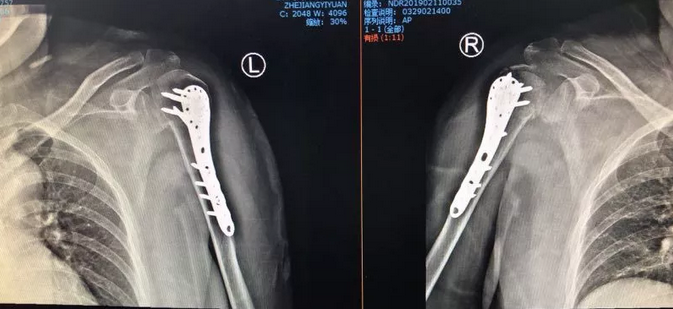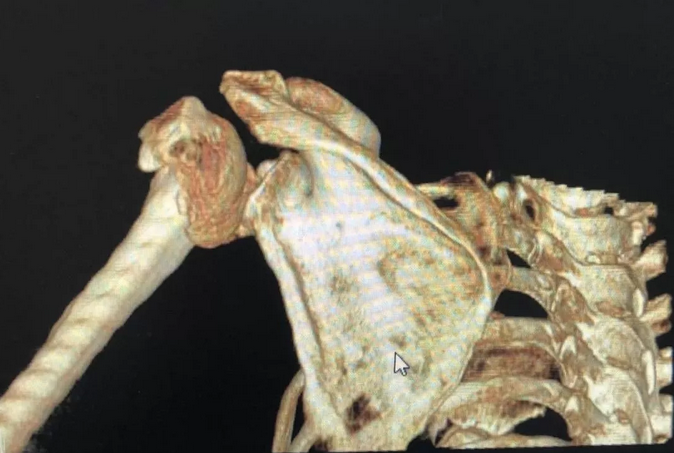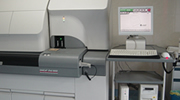[Recommended] Valentine's Day! Be Careful of the Love Hug, she has a fracture just because of her husband's hug.
Hits: 3270 Time: 2019-02-18
On valentine's Day, the couples on the street are busy with the holiday. However, in this special holiday, people must be careful of the love hug。
Not long ago, The San Dun division of Zhejiang Hospital received a special patient Ms. Zhang, 54-year-old. Due to inadvertent trauma, there occurs the painful swelling on both upper arms. Then he was transferred to the hospital emergency. X-Ray examination suggested that:there is a fracture on the bilateral humeral head and bilateral shoulder joint dislocation.

Why is there a fracture on both sides of humerus? Ms. Zhang did not suffer any great deal of impact or trauma.
According to Ms. Zhang's husband, he hugged his wife with little strength the day before. After that, his wife said it hurts and then there was no way to move her arm. He was very anxious and immediately sent Ms. Zhang to the hospital. This is what we didn't expect. The love hug gave his wife with a bad fracture!
When Sun Qicai, deputy chief physician of Zhejiang Hospital orthopedics When Sun Qicai viewed Ms. Zhang's X-ray film, he found that a 50-years-old Ms. Zhang's bone were as brittle as those of a 90-year-old man. We got the news that Ms. Zhang's husband had a hug in the normal range of force. The reason why there was a fracture when hugging is because Ms. Zhang's osteoporosis is very serious. “For this kind of proximal humerus fracture, it is extremely rare to be fracture on both sides simultaneously. MS. Zhang's body structure is the exceptional case which is caused by hugging. The closer check will reveal that Ms. Zhang's bones are very brittle, which is what we normally call a glass man." Sun Qicai said. It turned out that Ms. Zhang was taking hormone-based drugs for treatment because she had rheumatoid disease. However, Ms. Zhang did not take calcium supplements in time. Therefore, her bones were found at the age of 90.
How to deal with Ms. Zhang, a 54 year old woman, with the bilateral comminuted humerus fractures? MS. Zhang's husband took Ms. Zhang to other hospitals for treatment. They were suggested to directly replace the joint. Naturally both Ms. Zhang and her husband could not make up their minds about this. After all, she was still so young.
Song Baisuan, vice president of Zhejiang Hospital led the team including the department of orthopedics and anesthesiology to make further discussion and treatment to Ms. Song's situation. Finally, that team agreed that it would be a great loss for her to replace the joint at her age. Maybe she can do a repositioning internal fixation. That’s to say, it's to place a plate into Ms. Zhang's shoulder.
Bilateral humerus surgery at the same time was a great challenge for both Ms. Zhang and the surgeon. The team led by Song Boshan successfully completed the surgery for Ms. Zhang with skillful medical skills.


"Usually, older people would decide to do joint replacement. But for the young patient whose bones still had relatively strong capacity to grow up, they had a good condition for surgery operation. The patient had a very successful surgery and recovered well then. Usually the patient's condition would be very optimistic, if there is some related treatment including the calcium supplementation after surgery." Song Bosun said.
After that, Song Bobin visited Ms. Zhang and guided her post-operative rehabilitation. Meanwhile, the Department of Rehabilitation Medicine of Zhejiang Hospital also intervened in time for early bedside rehabilitation.
Because of the "love hug", Ms. Zhang spent the Spring Festival in the hospital, and on Valentine's Day, Ms. Zhang was discharged home.
Sun Qicai reminded that for rheumatoid diseases, the problem of osteoporosis must be paid more attention. The reason why Ms. Zhang's bones are the same as the elderly was because of the rheumatoid diseases. The main manifestation of human bone and joint damage is bone erosion, as well as peri-articular and systemic osteoporosis. General speaking, rheumatoid patients belong to the high-risk group of osteoporosis. Osteoporosis has also become a common skeletal tissue change on rheumatoid imaging. The prevention and treatment of osteoporosis is an integral part of rheumatoid clinical treatment.
Rheumatoid arthritis is a systemic inflammatory disease. When synovitis arises, the function of osteoclasts is enhanced and the function of osteoblasts becomes weaker, leading to a situation in which bone loss is greater than synthesis, resulting in osteoporosis. In addition, synovitis can also lead to changes in local blood circulation, affecting the supply of bone nutrients and increasing the probability of osteoporosis.
Medications for patients with rheumatoid arthritis might also lead to osteoporosis, with glucocorticoids being a common cause. The reason for that is that hormonal drugs could slow down collagen synthesis in osteoblasts and impeded the transformation of osteoprogenitor cells into osteoblasts; They could also increase bone resorption by enhancing the activity of osteoclasts. In addition, the gastrointestinal side effects associated with NSAIDs and immunosuppressants could also affect the patient's nutrient intake and absorption, resulting in nutritional deficiencies that could affect the metabolic function of normal bone tissue.
It is important to prevent and treat osteoporosis as early as possible. Osteoporosis is not only a painful problem, but also increases the risk of fracture. For example, rheumatoid patients taking glucocorticoids are at two to three times the risk of hip and spine fractures than the normal population. Once this happens, it is likely that they will never walk again, which greatly increases their own pain and the burden on their families.
Editing by: Jing Reviewing by: Jun





